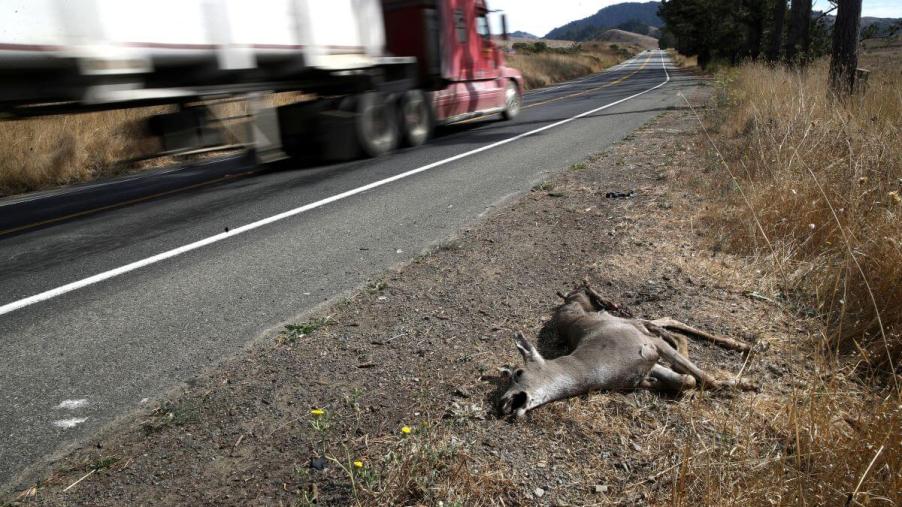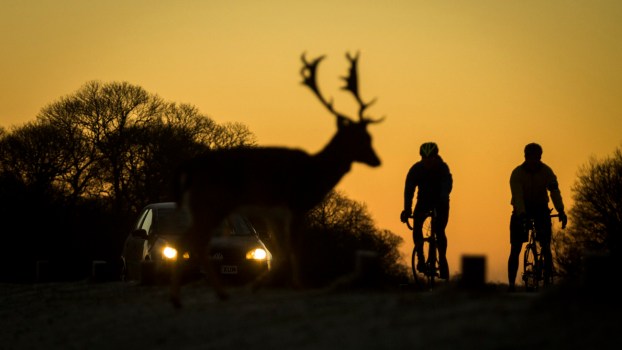
The 3 States Where You’re the Least Likely to Hit an Animal While Driving
Striking an animal with your car can be a traumatic experience, potentially resulting in car accident damage, passenger injuries, and even death for those in the vehicle (not to mention the animal). However, the risk of striking a large animal while driving greatly varies depending on where you call home or the roads you typically traverse. Below are the states where you are least likely to encounter wildlife on the road resulting in a vehicle collision.
A study showcases states where drivers are most and least likely to hit animals
A study by insurance company State Farm compiled crash statistics related to roadkill-related car crashes in the United States from July 1, 2019, through June 30, 2020, to determine the states where drivers face the most significant risk of a wildlife collision. State Farm reported 1.9 million “animal collision insurance claims” during the year-long period, and the company notes the “large majority” of these incidents involved a car striking a deer. The aftermath of these crashes ranged from small dents to totaled vehicles and injuries to drivers and passengers.
The data also underscored that drivers are far more likely to experience an animal collision in more rural states with abundant wildlife.
Hawaii, Nevada, and California drivers are the least likely to hit an animal
Generally, states in the country’s southwestern portion recorded the fewest animal collisions during State Farm’s study period. As such, two of the states with the fewest number of reported claims came from this area.
California ranked third among states where animal collisions are least likely. Drivers in the Golden State had a 1-in-427 chance of striking a large animal while driving. That is far less than the 1-in-116 national average recorded by the study.
The presence of large animals dictating the likelihood of an animal collision was underscored by Nevada landing second on the list. The study found drivers in Nevada had a 1-in-551 chance.
However, residents of Hawaii are least likely to have an animal collision across the United States. According to the study, drivers in the Aloha State had just a 1-in-649 chance of striking wildlife while driving.
Comparing Hawaii’s figure with that of the states in which drivers are most likely to crash with an animal showcases how living in certain areas can dramatically lower the risk. Drivers in West Virginia have a 1-in-37 chance compared to Hawaii’s 1-in-649.
The risk is even lower in 1 area
Though the chances of hitting an animal on the road in fairly slim in Hawaii, drivers in Washington, D.C. actually have a lower risk. Although not technically a state, the likelihood in Washington, D.C. was just 1-in-816, the study notes, due to the area’s heavy urbanization.
Tips for avoiding a wildlife-vehicle collision (WVC)
State Farm notes increased deer population and their displacement from natural habitats are raising the risk drivers face of striking these animals on the road. They list the following tips for preventing “animal-car collisions.”
- Stay alert
- Use your high beams when necessary or flick them on and off to scare deer off the road
- Don’t swerve to avoid an animal
- Brake hard if there are no cars behind you
- Reduce your speed and honk your horn if there is another car close behind
- Take peak deer seasons, like October through December, in mind when driving
- Understand deer are most likely to be on roads between dusk and dawn, and if you see one deer, there are likely more nearby
- Don’t rely on a car-mounted deer whistle
- Always wear a seatbelt and stick to the speed limit.




